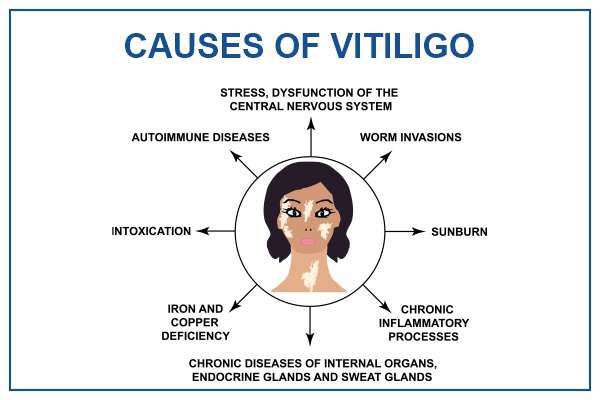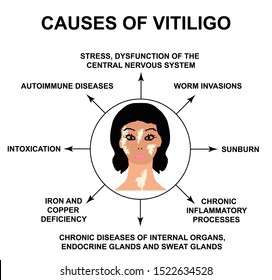Title: Leucoderma: Signs, Symptoms, Causes, Risk Factors, Diagnosis, Prevention, Diet, Lifestyle, and Homoeopathic Treatment
Introduction:
Leucoderma, also known as vitiligo, is a chronic skin condition characterized by the loss of pigment in certain areas of the skin, resulting in white patches. This condition can have a significant impact on one's appearance and self-esteem. Understanding the signs, symptoms, causes, risk factors, diagnosis methods, prevention strategies, diet and lifestyle considerations, and the potential role of homoeopathic treatment is crucial for effectively managing leucoderma. In this blog post, we will explore the key aspects of leucoderma and its holistic approach to treatment.
Signs and Symptoms of Leucoderma:
1. Depigmented patches: The primary symptom of leucoderma is the appearance of white patches on the skin. These patches may be localized or spread across various parts of the body.
2. Symmetrical distribution: In many cases, the patches appear in a symmetrical pattern on both sides of the body.
3. Loss of color in hair and eyes: In some cases, the affected areas may also experience a loss of color in the hair or the eyes.
4. Sensitivity to sunlight: The depigmented patches may be more susceptible to sunburn or sun damage.
Common Causes of Leucoderma:
1. Autoimmune factors: Leucoderma is believed to be an autoimmune disorder, where the immune system mistakenly attacks and destroys the melanocytes (cells responsible for skin pigmentation).
2. Genetic predisposition: Family history of leucoderma can increase the risk of developing the condition.
3. Environmental triggers: Certain environmental factors, such as exposure to certain chemicals or trauma to the skin, may trigger the onset of leucoderma.
Risk Factors for Leucoderma:
1. Family history: Having a close relative with leucoderma increases the risk of developing the condition.
2. Autoimmune diseases: Individuals with other autoimmune disorders, such as thyroid disease or alopecia areata, have a higher risk of developing leucoderma.
3. Psychological stress: Stressful events or prolonged emotional stress may contribute to the development or worsening of leucoderma.
Diagnosis of Leucoderma:
Leucoderma is typically diagnosed through a combination of medical history, physical examination, and sometimes additional tests, such as:
1. Wood's lamp examination: The affected skin is examined under a special lamp that emits ultraviolet light to assess the extent of depigmentation.
2. Skin biopsy: A small sample of the affected skin is taken for laboratory analysis to confirm the absence of melanocytes.
Prevention Strategies, Diet, and Lifestyle Considerations:
1. Sun protection: Protect the skin from excessive sun exposure by using sunscreen, wearing protective clothing, and seeking shade.
2. Stress management: Practice stress-reduction techniques like meditation, yoga, or engaging in hobbies to manage emotional stress.
3. Avoid trauma to the skin: Take precautions to avoid injury or trauma to the skin, as it may trigger the development of new patches.
4. Maintain a healthy diet: Consume a balanced diet rich in antioxidants, vitamins, and minerals to support overall skin health.
Homoeopathic Treatment for Leucoderma:
Homoeopathy offers an individualized approach to treating leucoderma. Some commonly used homoeopathic remedies for leucoderma include:
1. Arsenicum sulphuratum flavum: Indicated for leucoderma with a burning sensation and itching.
2. Hydrocotyle asiatica: Useful for treating leucoderma with thickened and rough skin.
3. Natrum muriaticum: Recommended for leucoderma associated with grief, stress, or emotional disturbances.
It is important to consult a qualified homoeopathic practitioner for an accurate diagnosis and individualized treatment plan based on your specific symptoms and overall health.
Conclusion:
Leucoderma can have a significant impact on an individual's self-esteem and overall well-being. By understanding the signs, symptoms, causes, risk factors, prevention strategies, diet and lifestyle considerations, and considering homoeopathic treatment as a complementary approach, individuals can effectively manage leucoderma and improve their quality of life. Remember to consult healthcare professionals for an accurate diagnosis and to create a comprehensive treatment plan tailored to your specific needs.






Leave a Message